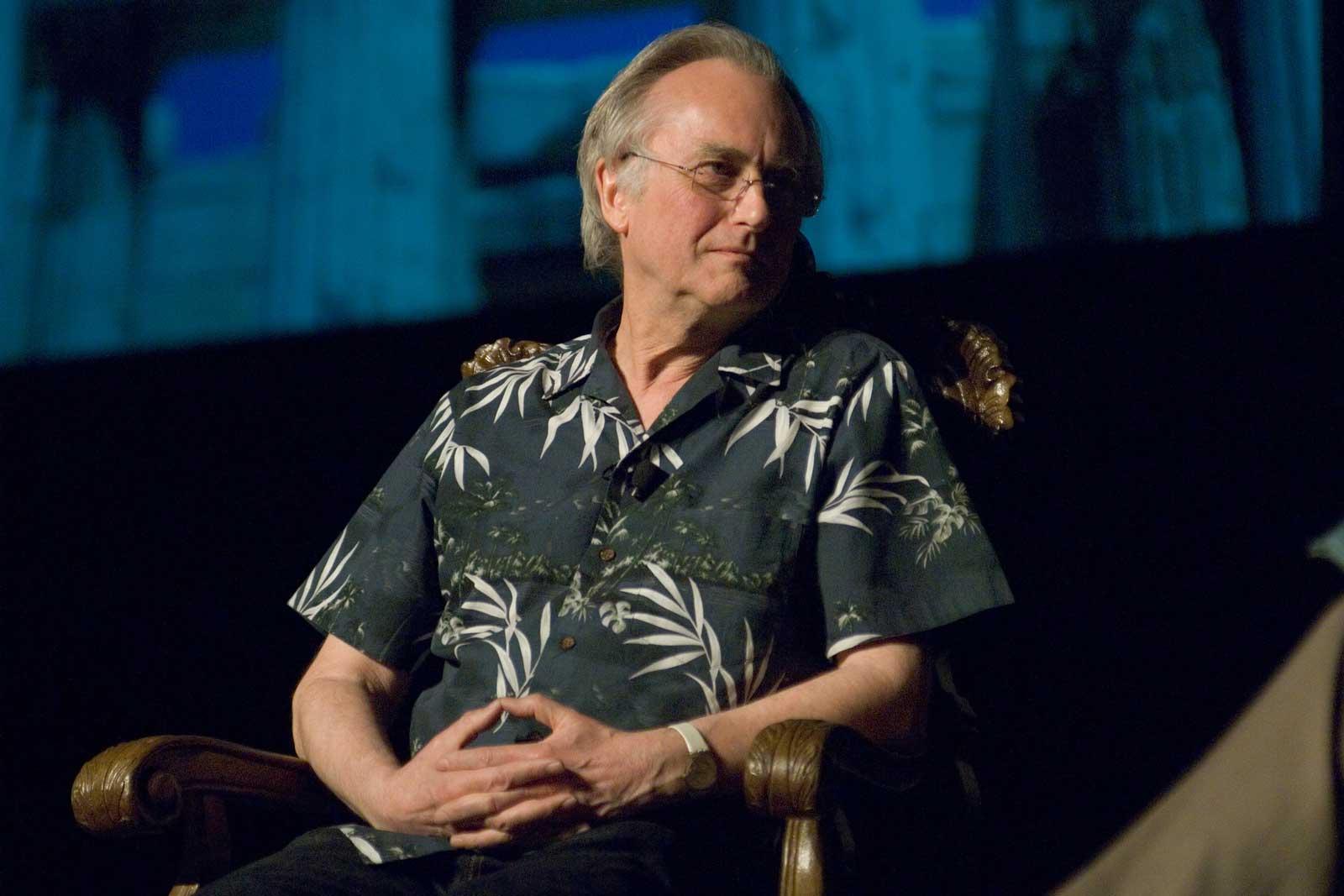There are two main worldviews regarding the origins of the universe and life itself: intelligent design vs naturalism. One school of thought is intelligent design, proposing that our universe was constructed by a divine creator. The other faction being naturalism, which negates any supernatural or spiritual explanation.
The purpose of this article is to examine both sides of the intelligent design vs naturalism argument to determine which theory is more valid. After looking at all of the evidence, we will be better equipped to take a stance on the subject. After examining both perspectives, I believe we will discover it takes more faith to believe in a Godless universe than it’s counterargument.
Definitions of Intelligent Design vs Naturalism
In order to decide which worldview makes the most sense, we must first understand each theory. To begin, let us define our terms.
Intelligent design is defined as:
“the theory that life, or the universe, cannot have arisen by chance and was designed and created by some intelligent entity.”
By definition, intelligent design is not a religious worldview. The theory does not claim membership to any particular religious sect or denomination. It merely asserts that the universe and life has a supernatural origin, from some type of omnipotent, supreme being. Intelligent design would most closely resemble the viewpoint of agnosticism.
However, naturalism differs from intelligent design in that it alleges the universe has naturalistic, or physical origins.
Naturalism is defined as:
“a philosophical viewpoint according to which everything arises from natural properties and causes, and supernatural or spiritual explanations are excluded or discounted.”
Similarly to intelligent design, naturalism claims no membership to any religious group. It contends that there is no supernatural agent behind the universe, and that everything in existence has a natural explanation. Naturalism would be considered an atheistic worldview.
Evidence & Examples Supporting Intelligent Design
Both camps of intelligent design vs naturalism have large groups of followers and supporters. But which worldview makes the most sense? Perhaps if use reasoning and logic while examining the properties and characteristics of our universe, we may be able to come to a justifiable conclusion.
Let us begin by examining both worldviews using only logic. We will dive deeper into both perspectives, but let’s start at the fundamental level. At the very core of both beliefs lies a profound assumption.
Cause & Effect
Intelligent design assumes that the universe, or every physical thing in existence, comes from an external source. It presumes that the universe had an initial cause. Intelligent design holds to the belief that something cannot come from nothing. This view complies with the First Law of Thermodynamics which states:
“total energy of an isolated system is constant; energy can be transformed from one form to another, but can be neither created nor destroyed.”
On the other hand, naturalism asserts that the universe had no external cause, and just came into existence. Naturalists initially believed in an eternal universe which was taught by Aristotle. A universe with no starting point but rather a timeless one that had existed forever. It wasn’t until modern science revealed the universe had a beginning, that naturalists began to change their theory.
After this revelation, naturalism looked to quantum physics to attempt to explain a random, spontaneously generated universe. They claimed that because sub-atomic particles randomly came in and out of existence, the universe was capable of doing so also. However in the video below, PhD William Lane Craig addresses the holes in this theory:
The Watchmaker Analogy
A popular argument in the intelligent design vs naturalism debate is the watchmaker analogy. The watchmaker argument states by way of analogy that design implies a designer. The analogy illustrates the logical implications of designed systems, using a simple example of a watch. William Paley in his book Natural Theology (1802), explains:
“In crossing a heath, suppose I pitched my foot against a stone, and were asked how the stone came to be there; I might possibly answer, that, for anything I knew to the contrary, it had lain there forever: nor would it perhaps be very easy to show the absurdity of this answer. But suppose I had found a watch upon the ground, and it should be inquired how the watch happened to be in that place; I should hardly think of the answer I had before given, that for anything I knew, the watch might have always been there. … There must have existed, at some time, and at some place or other, an artificer or artificers, who formed [the watch] for the purpose which we find it actually to answer; who comprehended its construction, and designed its use. … Every indication of contrivance, every manifestation of design, which existed in the watch, exists in the works of nature; with the difference, on the side of nature, of being greater or more, and that in a degree which exceeds all computation.”
This simple analogy shows the illogical notion that something designed can come about from natural causes. If we can safely assume that a designer was behind a watch, how absurd is it to assume an infinitely more complicated universe came from nothing? This argument reveals irrationality of believing in a designed watch, but not a designed universe.
This analogy can be illustrated similarly using a book as an example. What if we found a complete book filled with pictures and coherent text on the ground? Would we assume this book came into existence without an author and illustrator? DNA is an infinitely more complex language found in every single living thing in our universe. But we will get more into that later.
Fine Tuning of the Universe
Let’s dive a bit deeper and examine some of the characteristics of our universe. When we observe our universe, we discover a finely tuned and calibrated machine. This is known as the “fine tuning of the universe”, and is another common argument in the intelligent design vs naturalism debate.
The “fine-tuned universe” is defined as:
“the proposition that the conditions that allow life in the Universe can occur only when certain universal dimensionless physical constants lie within a very narrow range of values, so that if any of several fundamental constants were only slightly different, the Universe would be unlikely to be conducive to the establishment and development of matter, astronomical structures, elemental diversity, or life as it is understood.”
In other words, when we look at our universe we see a set of highly specific constants and quantities which are completely necessary for life. So specific in fact that if any of these values were tweaked by minuscule fraction of a fraction, the universe as we know it could not exist. Below is a list of the precise fine tuning parameters needed for life and the universe to exist:
- strong nuclear force constant
- weak nuclear force constant
- gravitational force constant
- electromagnetic force constant
- the ratio of electromagnetic force constant to gravitational force constant
- specific ratio of electron to proton mass
- ratio of number of protons to number of electrons
- expansion rate of the universe
- entropy level of the universe
- mass density of the universe
- initial uniformity of radiation
- density of galaxy cluster
- fine structure constant (describing the fine-structure splitting of spectral lines) if larger: all stars would be at least 30% less massive than the sun
- decay rate of protons
- 12C to 16O nuclear energy level ratio
- ground state energy level for 4He
- decay rate of 8Be
- ratio of neutron mass to proton mass
- initial excess of nucleons over anti-nucleons
- polarity of the water molecule
- supernovae eruptions
- white dwarf binaries
- ratio of exotic matter mass to ordinary matter mass
- number of effective dimensions in the early universe
- number of effective dimensions in the present universe
- mass of the neutrino
- big bang ripples
- size of the relativistic dilation factor
- uncertainty magnitude in the Heisenberg uncertainty principle
- cosmological constant
The Golden Ratio

The golden ratio is a highly, mathematically specific signature found in nature. It is found in a variety of organic life on our planet. In fact, it is such a common phenomenon that these occurrences reveal an identical design pattern. The extreme precision and specificity of the proportions contradict the idea of random evolutionary process.
Also commonly referred to as the “Golden Spiral” or “Fibonacci Spiral”, it is the ratio is defined LIVEScience as:
dividing a line into two parts so that the longer part divided by the smaller part is also equal to the whole length divided by the longer part.

But what is most interesting is the common occurrences of the golden ratio in nature. They almost seem to reflect the signature or “calling card” of the artist, sprinkled throughout the natural world. Below is a list of some of the natural occurrences of the golden ratio:
- Seed heads
- Pine cones
- Pineapples
- Cauliflower
- Flowers & branches
- DNA
- Human body and face
Irreducible Complexity
In the debate of intelligent design vs naturalism, we find more evidence supporting the former. As we further examine our universe, we begin to discover the immense complexity and intricacy of everything around us. Irreducible complexity is a term coined by Michael Behe, an American biochemist. It is defined by Behe as:
“Irreducible complexity is just a fancy phrase I use to mean a single system which is composed of several interacting parts, and where the removal of any one of the parts causes the system to cease functioning.”
Behe explains that recent discoveries in modern biology have revealed the immense intricacies of the cell. During the time of Darwin in the 19th century, scientists believed that the cell was a simple glob of protoplasm. It wasn’t until the early 1950’s that scientists discovered the true complexity each cell contains. The cell is the most fundamental unit of life, but contains immeasurable complexity.
Modern technology has revealed that each cell is like a microscopic city. We now know that cell is packed with circuits, assembly instructions, and miniature machines. At the molecular level, there is an elaborate system of machines, each interrelated with one another. Behe describes “molecular trucks” which carry supplies from one end of the cell to the other. He explains that there are machines which capture sunlight and convert it into usable energy. One “machine” which particularly caught Behe’s attention was the bacterial flagellum, containing corresponding parts which acted much like an outboard motor.
Using a simplistic example, each cell is like a finely tuned clock. Each gear and spring is interdependent on one another, making up the whole. If even one of the gears was removed, the clock would no longer function.
Complexity of DNA
If all of that wasn’t enough in the debate between intelligent design vs naturalism, let’s examine DNA. When we go even deeper, beyond the cell, we find DNA. DNA is the most complex programming language in existence. So what is DNA exactly? DNA is defined as:
“Deoxyribonucleic acid is a thread-like chain of nucleotides carrying the genetic instructions used in the growth, development, functioning and reproduction of all known living organisms and many viruses. DNA and ribonucleic acid (RNA) are nucleic acids; alongside proteins, lipids and complex carbohydrates (polysaccharides), they are one of the four major types of macromolecules that are essential for all known forms of life. Most DNA molecules consist of two biopolymer strands coiled around each other to form a double helix.”
DNA is a form of digital, nano technology which is responsible for encoding information. The information in the DNA directs the construction of the proteins and protein machines which are necessary for the cell to stay alive. When we further examine it, we find the information to be extremely complex.
DNA contains massive amounts of information, i.e. code. The human genome contains 3 billion characters of information in DNA. Not only that, but this code is interconnected and interrelated working in tandem with everything else.
When discussing the complexity of DNA, Bill Gates stated:
Human DNA is like a computer program but far, far more advanced than any we’ve ever created
And when we are dealing with information, the question of origin arises once again. We know that we need information to build each individual component of the cell. If we want to know the genesis of the first cell, we must first account for the origin of information. This is why DNA is a compelling argument in the debate of intelligent design vs naturalism.







